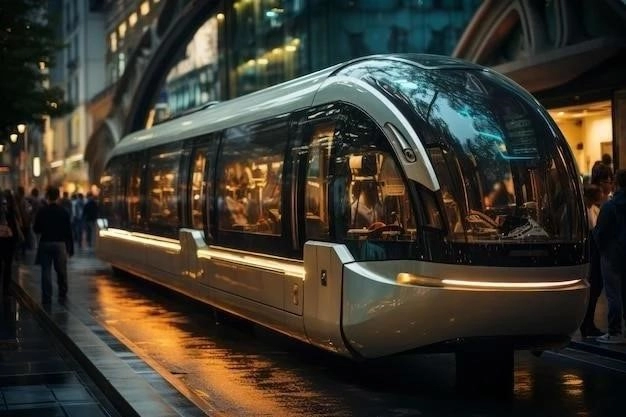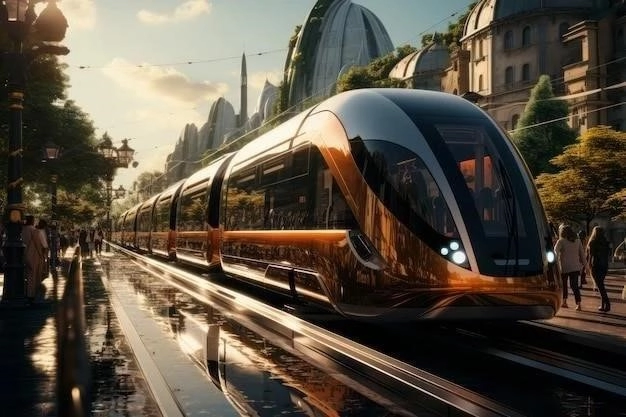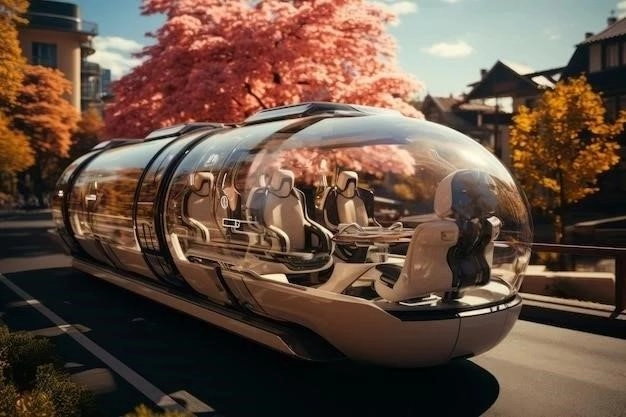The History of Transportation: From Horses to Hyperloop
Transportation, the lifeblood of civilization, has undergone a dramatic transformation since the dawn of humanity. From the humble beginnings of walking and riding animals to the cusp of near-instantaneous travel with the Hyperloop, our journey through the history of transportation is a testament to human ingenuity and our relentless pursuit of progress.

Early Forms of Transportation: Necessity, the Mother of Invention
For millennia, human movement was primarily restricted by geographical features and physical limitations. Walking was the original mode of transport, eventually leading to the domestication of animals like horses, oxen, and camels for riding and hauling goods.
- The Wheels Revolution: The invention of the wheel, approximately 5,500 years ago in Mesopotamia, marked a pivotal turning point. This revolutionary innovation paved the way for carts and chariots, dramatically enhancing load-carrying capacity and travel speed.
- Sailing the Seas: Parallel to land-based advancements, civilizations explored waterways for transportation. Early rafts and canoes, crafted from natural materials, gradually evolved into more sophisticated sailing vessels, enabling exploration, trade, and cultural exchange across vast distances.
The Age of Empires and Trade Routes: Connecting the World
As empires rose and trade networks expanded, efficient transportation became paramount. The Romans, renowned for their engineering prowess, constructed an extensive network of roads, some of which remain in use today. These roads facilitated the movement of legions, goods, and information, solidifying Roman dominance for centuries.
- The Silk Road: This legendary network of trade routes, spanning over 4,000 miles and connecting East Asia with Europe, played a crucial role in fostering cultural exchange and economic development for over 1,500 years. Caravans of camels, laden with silk, spices, and other valuable commodities, traversed treacherous deserts and mountain passes, highlighting the importance of transportation in shaping global civilizations.
The Industrial Revolution: A Transportation Renaissance
The 18th century ushered in an era of unprecedented technological advancements, fundamentally transforming transportation.
- The Steam Engine: James Watts improved steam engine design in 1776 ignited a revolution. This groundbreaking invention powered the first steamboats, like Robert Fultons Clermont in 1807, and locomotives, like Richard Trevithicks in 1804.
- Railways Transform the Landscape: The 19th century witnessed the rapid expansion of railway networks across Europe and North America. Railways facilitated the transportation of raw materials, finished goods, and people with unprecedented speed and efficiency, profoundly impacting industrial growth and urbanization.
- The Rise of the Automobile: While early experiments with steam-powered automobiles emerged in the 19th century, it was the invention of the internal combustion engine by Karl Benz in 1886 that truly revolutionized personal transportation; The automobile offered unprecedented freedom and mobility, forever changing the way we live, work, and experience the world.

The 20th Century: Taking to the Skies and Beyond
The 20th century witnessed an explosion of innovation in transportation technology, pushing the boundaries of speed and distance.
- The Wright Brothers Conquer the Skies: The Wright brothers historic flight in 1903 at Kitty Hawk marked the dawn of powered flight. From these humble beginnings, aviation rapidly evolved, connecting continents through a complex web of air routes and transforming global travel.
- The Jet Age Arrives: The invention of the jet engine in the mid-20th century further revolutionized air travel. Jet-powered aircraft, capable of achieving significantly higher speeds and altitudes, drastically reduced travel times and made intercontinental travel accessible to a wider population.
- Space Exploration: The Ultimate Frontier: The latter half of the 20th century witnessed humanitys venture into the cosmos; From Yuri Gagarins pioneering orbit of Earth in 1961 to the Apollo 11 moon landing in 1969, space exploration pushed the boundaries of human ingenuity and technological prowess, opening up new frontiers for transportation and scientific discovery.

The 21st Century and Beyond: Towards a Sustainable and Connected Future
As we navigate the 21st century, transportation faces new challenges and opportunities. Sustainability, efficiency, and connectivity are paramount concerns driving innovation.
- The Rise of Electric Vehicles: Concerns about climate change and dwindling fossil fuel reserves have fueled the development and adoption of electric vehicles (EVs). With advancements in battery technology and charging infrastructure, EVs are poised to play a significant role in reducing carbon emissions and transforming the automotive industry.
- Autonomous Vehicles: Reshaping Mobility: Self-driving cars, buses, and trucks, equipped with advanced sensors and artificial intelligence, are no longer a futuristic fantasy. Autonomous vehicles hold the potential to revolutionize transportation systems, improving safety, efficiency, and accessibility.
- Hyperloop: A Glimpse into the Future: Elon Musks ambitious Hyperloop concept envisions a high-speed transportation system where pods travel through near-vacuum tubes at speeds exceeding 700 mph. While still in its early stages of development, Hyperloop technology has the potential to revolutionize long-distance travel, connecting cities in unprecedented ways.
Conclusion
The history of transportation is a testament to human ingenuity and our unwavering desire to explore, connect, and push the boundaries of whats possible. From the first tentative steps of our ancestors to the brink of near-instantaneous global travel, our journey has been one of continuous innovation. As we look to the future, one thing remains certain: the relentless pursuit of progress will continue to shape the way we move and connect in the world.
The Dawn of Intelligent Transportation Systems
The 21st century is not just about novel modes of transport but also about optimizing existing infrastructure and managing the increasing complexity of mobility. Intelligent Transportation Systems (ITS) leverage information and communication technologies to improve efficiency, safety, and sustainability.
- Real-Time Data Analysis: ITS utilize sensors, cameras, and GPS technology to gather real-time traffic data. This information is processed and analyzed to optimize traffic flow, reduce congestion, and provide travelers with dynamic routing options and accurate travel time predictions.
- Connected and Automated Vehicles (CAVs): CAV technologies are integral to ITS, enabling vehicle-to-vehicle (V2V) and vehicle-to-infrastructure (V2I) communication. This interconnectedness enhances road safety by allowing vehicles to share information about their location٫ speed٫ and potential hazards٫ facilitating collision avoidance and smoother traffic flow.
Mobility-as-a-Service (MaaS): Transforming Transportation Ecosystems
The concept of MaaS represents a paradigm shift in how we approach transportation. It moves away from private vehicle ownership towards a user-centric model that integrates various modes of transport into a seamless, on-demand service.
- Personalized Transportation Solutions: MaaS platforms utilize smartphone apps to provide users with personalized trip planning, booking, and payment options. By integrating public transportation, ride-hailing services, bike-sharing programs, and even micro-mobility options like scooters, MaaS offers flexible, multimodal solutions tailored to individual needs and preferences.
- Enhancing Accessibility and Equity: MaaS has the potential to address transportation equity issues by providing accessible and affordable mobility options for underserved communities. By integrating various modes and offering flexible payment structures, MaaS can bridge the gap in transportation access and promote social inclusion.
Challenges and Opportunities on the Horizon
While the future of transportation appears bright with innovation, several challenges require careful consideration:
- Data Privacy and Security: As transportation systems become increasingly data-driven, safeguarding user privacy and ensuring data security against cyber threats are paramount concerns. Robust cybersecurity measures and transparent data governance frameworks are essential to maintain public trust and ensure the responsible development of these technologies.
- Infrastructure Investment and Adaptation: Transitioning to a future of connected and autonomous transportation requires significant investment in upgrading existing infrastructure and developing new systems. This includes integrating sensor technology, establishing robust communication networks, and adapting roadways to accommodate CAVs safely and efficiently.
- Addressing the Digital Divide: To fully realize the potential of MaaS and ensure equitable access to transportation innovations, its crucial to address the digital divide. This includes ensuring equitable access to affordable internet services, digital literacy programs, and user-friendly interfaces that cater to diverse populations.
Conclusion: Navigating Towards a Sustainable and Inclusive Future
The journey of transportation is a testament to human innovation and our relentless pursuit of progress. As we stand at the cusp of a new era defined by intelligent systems, connected vehicles, and transformative mobility solutions, we must prioritize sustainability, accessibility, and equity. By addressing the challenges and harnessing the full potential of emerging technologies, we can create a future where transportation is safe, efficient, and accessible to all, fostering a more connected and prosperous world.
The Ethical Imperative: Navigating the Societal Impacts of Transportation Innovation
The rapid pace of technological advancement in transportation brings forth not only unprecedented opportunities but also complex ethical dilemmas that demand careful consideration. As we integrate increasingly sophisticated technologies into our transportation systems, it is crucial to ensure that these advancements align with our societal values and contribute to a more just and equitable world.
- Algorithmic Bias and Fairness: As algorithms play an increasingly influential role in managing traffic flow, optimizing routes, and even controlling autonomous vehicles, it is essential to address the potential for algorithmic bias. Algorithms trained on biased data sets can perpetuate and even exacerbate existing inequalities in access to transportation, disproportionately impacting marginalized communities. Rigorous testing, ongoing monitoring, and transparent accountability mechanisms are essential to ensure fairness and prevent unintended consequences.
- Job Displacement and Workforce Transition: The rise of automation in transportation, particularly with the advent of autonomous vehicles, raises concerns about job displacement and its impact on the workforce. While these technologies hold the potential to enhance efficiency and productivity, it is crucial to proactively address the potential displacement of workers in the transportation sector. Investing in retraining programs, fostering new skill development opportunities, and creating social safety nets for displaced workers are essential steps to ensure a just and equitable transition.
Cybersecurity and Data Privacy: Safeguarding Trust in a Connected Transportation Ecosystem
The increasing interconnectedness of transportation systems, while offering significant benefits, also exposes them to a wider range of cybersecurity threats. Protecting these systems from malicious actors and safeguarding the vast amounts of data they generate is paramount to maintaining public trust and ensuring the safe and reliable operation of critical infrastructure.
- Securing Connected and Autonomous Vehicles: CAVs, reliant on complex software systems and interconnected networks, are potentially vulnerable to cyberattacks. Securing these vehicles requires a multi-layered approach encompassing robust software development practices, rigorous testing for vulnerabilities, and the implementation of intrusion detection and prevention systems. Collaboration between automakers, technology providers, and cybersecurity experts is crucial to staying ahead of emerging threats.
- Data Privacy and Responsible Data Governance: Transportation systems generate vast amounts of data about individual travel patterns, behaviors, and preferences. Protecting the privacy of this data is not only an ethical imperative but also crucial for maintaining public trust. Implementing strong data encryption measures, obtaining informed consent for data collection and usage, and establishing clear data governance frameworks are essential steps to ensure responsible and ethical data practices.
The Road Ahead: Embracing Collaboration and Fostering Innovation
The future of transportation is being shaped by a confluence of technological advancements, evolving societal needs, and a growing awareness of the ethical implications. Navigating this complex landscape requires a collaborative approach that brings together stakeholders from government, industry, academia, and the public.
- Fostering Public-Private Partnerships: Addressing the challenges and opportunities in transportation requires collaboration and resource sharing between the public and private sectors. Public-private partnerships can facilitate the development of innovative solutions, accelerate the deployment of new technologies, and ensure that these advancements align with broader societal goals.
- Investing in Research and Development: Continued investment in transportation research and development is crucial for driving innovation, addressing emerging challenges, and ensuring the long-term sustainability of our transportation systems. This includes supporting fundamental research into new technologies, as well as applied research focused on real-world implementation and addressing practical challenges.
- Promoting International Cooperation: Transportation challenges transcend national borders, requiring international cooperation to develop common standards, share best practices, and address global issues such as climate change and transportation equity. International forums and agreements can foster collaboration, accelerate the adoption of sustainable transportation solutions, and promote a more interconnected and equitable world.
In conclusion, the future of transportation holds immense promise and presents us with a unique opportunity to reshape how we move and connect in the world. By embracing innovation, addressing ethical considerations, and fostering collaboration, we can create a future where transportation is not only efficient and sustainable but also equitable, accessible, and aligned with our shared values.
The Convergence of Technologies: Reshaping the Transportation Landscape
The transportation sector is on the cusp of a transformative era, driven by the convergence of multiple technological advancements. These converging forces hold the potential to reshape not only how we move but also how we live, work, and interact with our surroundings.
- Artificial Intelligence and Machine Learning: AI and ML are playing an increasingly pivotal role in optimizing transportation systems, from intelligent traffic management to predictive maintenance of vehicles and infrastructure. These technologies enable us to analyze vast datasets, identify patterns, and make data-driven decisions that enhance efficiency, safety, and reliability.
- Internet of Things (IoT) and Connected Vehicles: The proliferation of sensors, connected devices, and high-speed communication networks is enabling the emergence of a truly interconnected transportation ecosystem. Vehicle-to-vehicle (V2V) and vehicle-to-infrastructure (V2I) communication systems hold the promise of enhancing safety by enabling vehicles to share real-time information about their location٫ speed٫ and potential hazards.
- Blockchain Technology: Blockchain, known for its secure and transparent nature, has the potential to revolutionize various aspects of transportation, including supply chain management, freight logistics, and mobility-as-a-service platforms. Its decentralized and immutable ledger system can enhance trust, streamline transactions, and reduce the need for intermediaries.
Addressing the Challenges of Urbanization: Sustainable Mobility for Growing Cities
As urban populations continue to swell, cities around the world face mounting challenges in providing efficient, sustainable, and equitable transportation options for their residents. Addressing these urban mobility challenges is crucial for ensuring the livability, economic competitiveness, and environmental sustainability of our cities.
- Multimodal Transportation Systems: Creating seamless and integrated multimodal transportation systems is essential for reducing congestion, improving air quality, and enhancing mobility options for residents. This involves integrating various modes of transportation, such as public transit, ride-sharing services, bike-sharing programs, and pedestrian infrastructure, into a cohesive and user-friendly system.
- Smart City Initiatives: Leveraging technology to create smarter, more efficient, and responsive urban environments is crucial for addressing transportation challenges. Smart city initiatives encompass a range of solutions, including intelligent traffic management systems, real-time parking availability systems, and dynamic public transit information systems.
- Promoting Active Transportation: Encouraging walking, cycling, and other forms of active transportation is not only beneficial for public health but also contributes to reducing traffic congestion and greenhouse gas emissions. Creating pedestrian-friendly streetscapes, expanding bike lane networks, and promoting active transportation through incentives and public awareness campaigns are essential steps in this direction.
The Future of Transportation: A Vision of Sustainability, Equity, and Innovation
The future of transportation is poised for continued disruption and transformation, driven by technological advancements, evolving societal needs, and a growing imperative for sustainability and equity. By embracing innovation, fostering collaboration, and prioritizing the needs of all users, we can create a future where transportation is not merely a means of getting from point A to point B, but a catalyst for progress, connectivity, and a more sustainable and equitable world.










